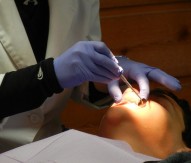
EU-funded study reveals styrene impacts could be eradicated
According to researchers from the UK’s Plymouth University, the human and environmental dangers posed by painting or spraying fibre-reinforced polymer matrix composites onto products, which causes the vapours of a volatile organic compound – styrene, found in polyesters and vinyl-esters – to be emitted, could be almost eradicated.
The team from Plymouth University, part of the €1.4m InGeCt project funded by the European Union’s Seventh Framework Programme, has identified that in-mould gel-coating could reduce average styrene levels by more than 98% and provide a route to improved workplace conditions and reduced environmental impact.
Dr John Summerscales, associate professor in composites engineering at Plymouth University, who led the study, said: “Styrene has been the subject of extensive debate in respect of health and environmental issues. Exposure to styrene has previously been linked to altered mood states, in particular aggression, while its vapour has been reported to cause depression, fatigue and a slowing in reaction times. By reducing styrene levels in the workplace, there would be numerous positive results, such as improving retention of workforce personnel, minimising release to the environment and reducing odour at the factory boundary.
“The occupational exposure limits for styrene currently vary across the European Union, but a recent directive (REACH) is likely to result in the harmonisation of permitted styrene levels – most probably at the current lowest (Scandinavian) level. The recommendation for a 20ppm time-weighted average, which would be an 80% cut in the UK, is unlikely to be achievable with open mould gel-coating.
“The research we have undertaken aims to keep composites manufacturing within the EU, rather than exporting difficult manufacturing processes to less regulated countries, with subsequent benefits for employment within European nations,” he concluded.




